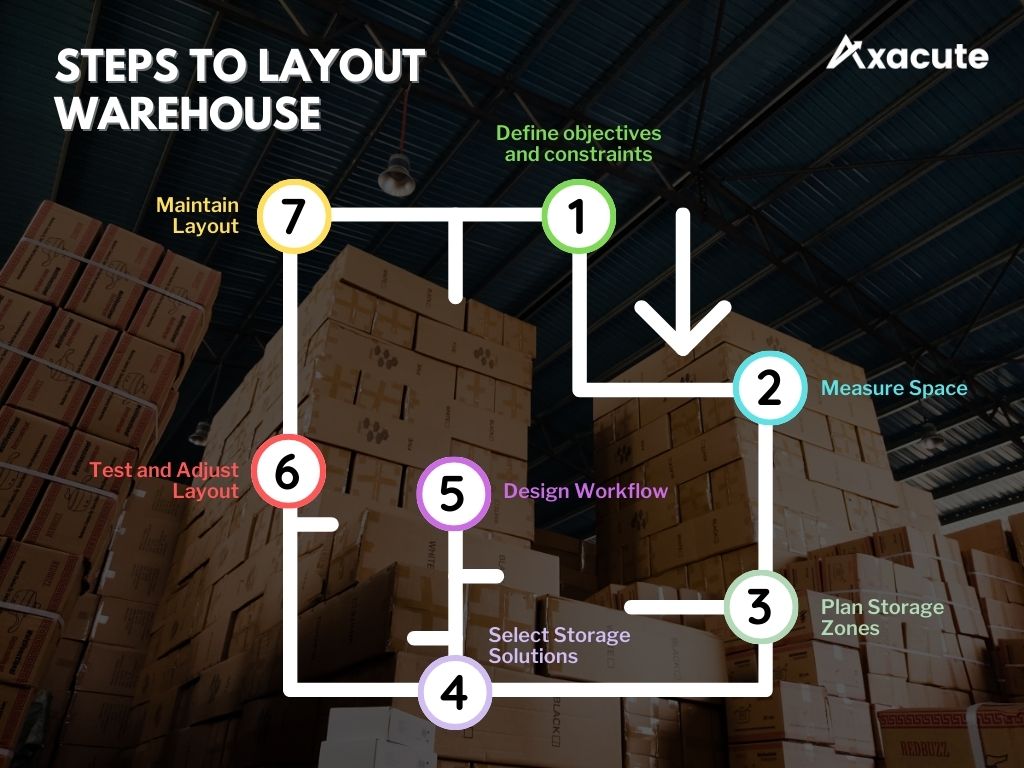If you’re running a business that involves storing and shipping products, then the layout of your warehouse is crucial to the success of your operations. Poorly organized storage can lead to wasted time, effort, and money. In this article, we’ll discuss the most important aspects of warehouse layout and offer practical tips to optimize your storage spaces.
A well-designed layout can save time and effort in product handling, order picking, and shipping, which translates into faster turnaround times, higher productivity, and lower costs.
A poorly designed warehouse can increase the risk of accidents, such as slips, falls, collisions, and injuries from heavy equipment or falling objects.
An efficient layout can maximize the use of available space, which is especially important if you have limited storage capacity or need to accommodate a growing inventory.
A fast and accurate order fulfillment process can improve your customers’ experience and increase their loyalty.
Safety stock is an additional inventory that manufacturers keep to mitigate the risks of stockouts. It is the buffer inventory that manufacturers keep to ensure that they can fulfill customer orders, even during unexpected demand spikes or supply chain disruptions. Safety stock management is crucial for manufacturers because it helps them maintain a high level of customer service and avoid lost sales.
Here are the steps to follow to create an effective warehouse layout:

Before you start designing your warehouse layout, you need to clarify your goals and limitations. Ask yourself these questions:
To design an optimal warehouse layout, you need to know the exact dimensions and features of your space. Use a tape measure, laser distance meter, or floor plan software to get accurate measurements of:
The next step is to divide your warehouse into storage zones based on your products’ characteristics, frequency of use, and handling requirements. Here are some examples of storage zones:
Once you have defined your storage zones, you need to select the appropriate storage solutions that match your products’ requirements, volume, and frequency of use. Here are some common storage solutions:
Once you have chosen your storage solutions, you need to plan how to move products through your warehouse efficiently. This involves designing your workflow, which includes:
Before you implement your new warehouse layout, you should test it with a pilot project or a simulation software to identify any potential issues or bottlenecks. You can also ask for feedback from your employees or customers to see if the layout meets their needs and expectations. If necessary, you can adjust your layout by changing the placement of storage solutions, modifying your workflow, or adding new features.
Once your new layout is in place, you should establish a maintenance schedule to ensure that your storage solutions are clean, safe, and functional. This includes inspecting your racks, shelves, and other equipment for damage, replacing worn or broken parts, and training your employees on how to use and maintain the storage solutions properly. You should also review your layout periodically to see if it still meets your business goals and to identify any opportunities for improvement.
In summary, the layout of your warehouse is a critical factor in the success of your business. By following these steps and guidelines, you can create a warehouse layout that maximizes efficiency, safety, space utilization, and customer satisfaction. Remember to define your objectives and constraints, measure your space, plan your storage zones, choose your storage solutions, design your workflow, test and adjust your layout, and maintain your layout. With the right layout, you can optimize your operations and grow your business.
Contact Us
Related
Get started with Axacute and improve your business operations.